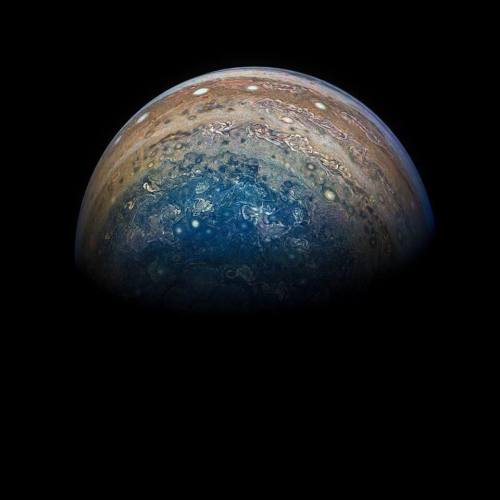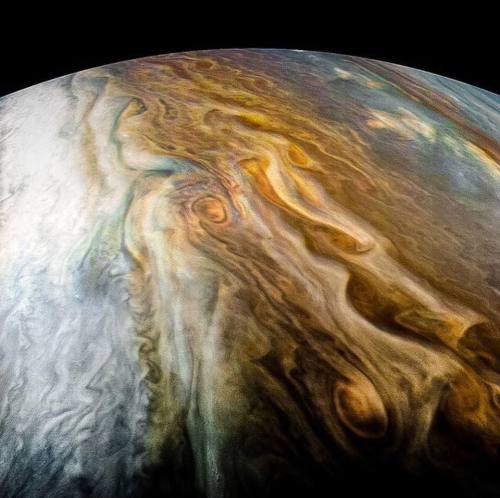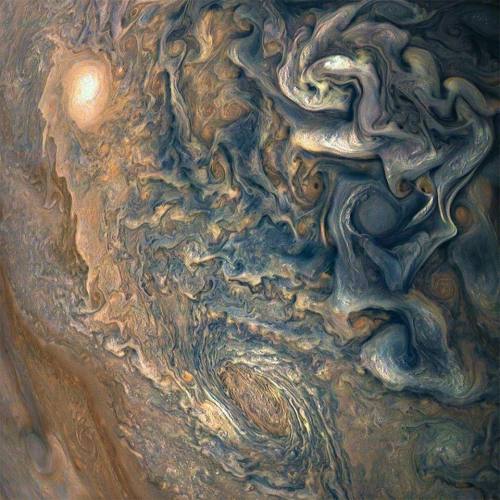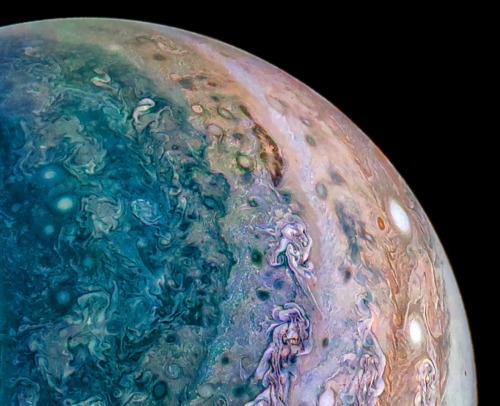Simongerman600


simongerman600
More Posts from Sciencebloggin and Others
Rocket Launch as seen from the space station
So Google does math for you??
division

square roots

dividing percentages

IT EVEN FOILS

beautiful.
NASA has released new images of Jupiter, taken by the Juno Spacecraft.







The speed of light is just the maximum speed that the universe can render at



dude.
so international space station astronauts apparently dropped a tool bag during a spacewalk. and if you look outside when the ISS is in your region, you can see it with binoculars
The tool bag is now orbiting our planet just ahead of the ISS with a visual magnitude of around 6, according to EarthSky. That means it is slightly less bright than the ice giant Uranus, the seventh planet from the sun. As a result, the bag — officially known as a crew lock bag — is slightly too dim to be visible to the unaided eye, but skywatchers should be able to pick it up with binoculars. To see it for yourself, first find out when you can find spot the space station over the next few months (NASA even has a new app to help you). The bag should be floating two to four minutes ahead of the station. As it descends rapidly, the bag is likely to disintegrate when it reaches an altitude of around 70 miles (113 kilometers) over Earth.

she's fucking magnificent

Quantum tunnelling
Tunneling is a quantum mechanical effect. A tunneling current occurs when electrons move through a barrier that they classically shouldn’t be able to move through. In classical terms, if you don’t have enough energy to move “over” a barrier, you won’t. However, in the quantum mechanical world, electrons have wavelike properties. These waves don’t end abruptly at a wall or barrier, but taper off quickly. If the barrier is thin enough, the probability function may extend into the next region, through the barrier! Because of the small probability of an electron being on the other side of the barrier, given enough electrons, some will indeed move through and appear on the other side. When an electron moves through the barrier in this fashion, it is called tunneling.

Quantum mechanics tells us that electrons have both wave and particle-like properties. Tunneling is an effect of the wavelike nature.

The top image shows us that when an electron (the wave) hits a barrier, the wave doesn’t abruptly end, but tapers off very quickly - exponentially. For a thick barrier, the wave doesn’t get past.
The bottom image shows the scenario if the barrier is quite thin (about a nanometer). Part of the wave does get through and therefore some electrons may appear on the other side of the barrier.
Because of the sharp decay of the probability function through the barrier, the number of electrons that will actually tunnel is very dependent upon the thickness of the barrier. The current through the barrier drops off exponentially with the barrier thickness
Source: nanoscience.com | Images: x | x | x

In hopes of inspiring younger generations, NASA created this series of gorgeous retro travel posters that encourage you to imagine a future where common space travel is a legitimate possibility. Source


















This image of Jupiter was taken by Juno on December 16 and then processed by citizen scientist David Marriott.
Image credit: NASA / JPL-Caltech / SwRI / MSSS / David Marriott

-
 catalllo reblogged this · 1 week ago
catalllo reblogged this · 1 week ago -
 taoguide liked this · 1 month ago
taoguide liked this · 1 month ago -
 fullmetaldyke reblogged this · 1 month ago
fullmetaldyke reblogged this · 1 month ago -
 bold-of-you-to-behold liked this · 1 month ago
bold-of-you-to-behold liked this · 1 month ago -
 royalblondkid liked this · 1 month ago
royalblondkid liked this · 1 month ago -
 butterchoo liked this · 1 month ago
butterchoo liked this · 1 month ago -
 thegreatshaggylord reblogged this · 1 month ago
thegreatshaggylord reblogged this · 1 month ago -
 thegreatshaggylord liked this · 1 month ago
thegreatshaggylord liked this · 1 month ago -
 milosnail liked this · 1 month ago
milosnail liked this · 1 month ago -
 spookytorosaurus liked this · 1 month ago
spookytorosaurus liked this · 1 month ago -
 drfagpire reblogged this · 1 month ago
drfagpire reblogged this · 1 month ago -
 hmmmkaaylah liked this · 1 month ago
hmmmkaaylah liked this · 1 month ago -
 grapes-from-space reblogged this · 1 month ago
grapes-from-space reblogged this · 1 month ago -
 cktsotd reblogged this · 1 month ago
cktsotd reblogged this · 1 month ago -
 earthgeco liked this · 1 month ago
earthgeco liked this · 1 month ago -
 artesian-diff liked this · 1 month ago
artesian-diff liked this · 1 month ago -
 bibimbobibliophile reblogged this · 1 month ago
bibimbobibliophile reblogged this · 1 month ago -
 iristovevo reblogged this · 1 month ago
iristovevo reblogged this · 1 month ago -
 catpanflowers reblogged this · 2 months ago
catpanflowers reblogged this · 2 months ago -
 shes-a-naturaldisaster liked this · 2 months ago
shes-a-naturaldisaster liked this · 2 months ago -
 therealbrigeedarocks reblogged this · 2 months ago
therealbrigeedarocks reblogged this · 2 months ago -
 liimlsan reblogged this · 2 months ago
liimlsan reblogged this · 2 months ago -
 liimlsan liked this · 2 months ago
liimlsan liked this · 2 months ago -
 65mystery liked this · 2 months ago
65mystery liked this · 2 months ago -
 wlillowsworld42 reblogged this · 2 months ago
wlillowsworld42 reblogged this · 2 months ago -
 hildcit reblogged this · 2 months ago
hildcit reblogged this · 2 months ago -
 mybonesaremadeofstone liked this · 2 months ago
mybonesaremadeofstone liked this · 2 months ago -
 blueboxmaniac reblogged this · 2 months ago
blueboxmaniac reblogged this · 2 months ago -
 verticesoftransform liked this · 2 months ago
verticesoftransform liked this · 2 months ago -
 small-enemy-cat liked this · 2 months ago
small-enemy-cat liked this · 2 months ago -
 dargonbean liked this · 2 months ago
dargonbean liked this · 2 months ago -
 chamomile-toad liked this · 2 months ago
chamomile-toad liked this · 2 months ago -
 drowsyinsomnia reblogged this · 2 months ago
drowsyinsomnia reblogged this · 2 months ago -
 grapes-from-space liked this · 2 months ago
grapes-from-space liked this · 2 months ago -
 ijinhit liked this · 2 months ago
ijinhit liked this · 2 months ago -
 reallyintoscience liked this · 2 months ago
reallyintoscience liked this · 2 months ago -
 pinkish-rose reblogged this · 2 months ago
pinkish-rose reblogged this · 2 months ago -
 riadelva reblogged this · 2 months ago
riadelva reblogged this · 2 months ago -
 moonmunster liked this · 2 months ago
moonmunster liked this · 2 months ago -
 werewolfenthusiast liked this · 2 months ago
werewolfenthusiast liked this · 2 months ago -
 drowsyinsomnia reblogged this · 2 months ago
drowsyinsomnia reblogged this · 2 months ago -
 drowsyinsomnia liked this · 2 months ago
drowsyinsomnia liked this · 2 months ago -
 strugglequill reblogged this · 2 months ago
strugglequill reblogged this · 2 months ago -
 strugglequill liked this · 2 months ago
strugglequill liked this · 2 months ago -
 chaoticsamson reblogged this · 2 months ago
chaoticsamson reblogged this · 2 months ago -
 chuckling-chemist liked this · 2 months ago
chuckling-chemist liked this · 2 months ago -
 linzod reblogged this · 2 months ago
linzod reblogged this · 2 months ago -
 linzod liked this · 2 months ago
linzod liked this · 2 months ago -
 grackkk liked this · 2 months ago
grackkk liked this · 2 months ago -
 watery-melon-baller reblogged this · 2 months ago
watery-melon-baller reblogged this · 2 months ago
